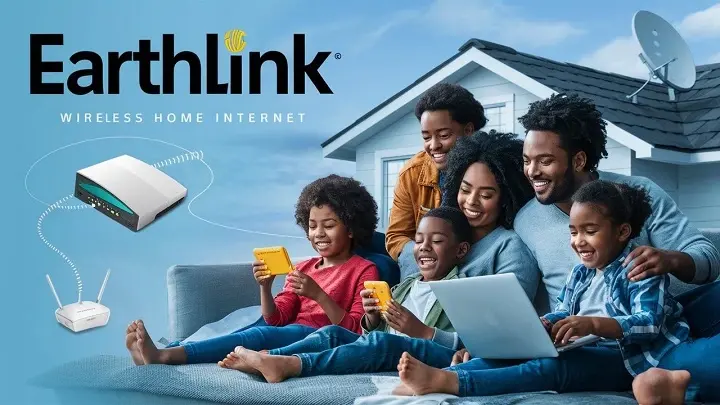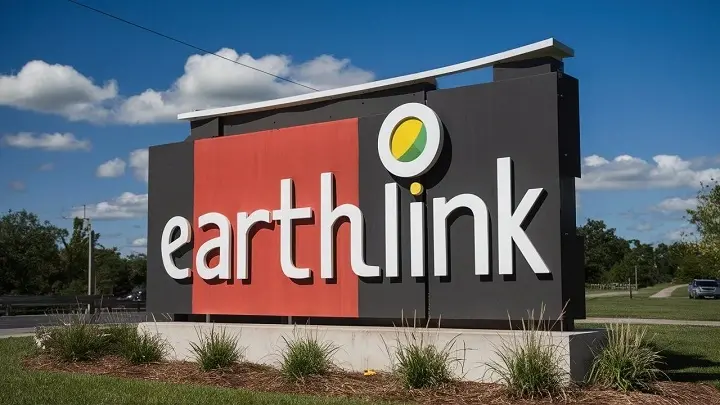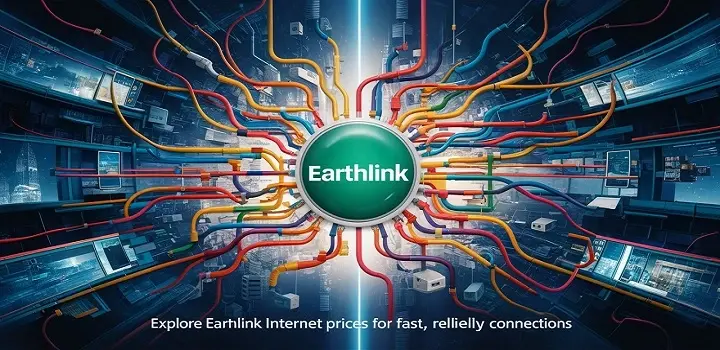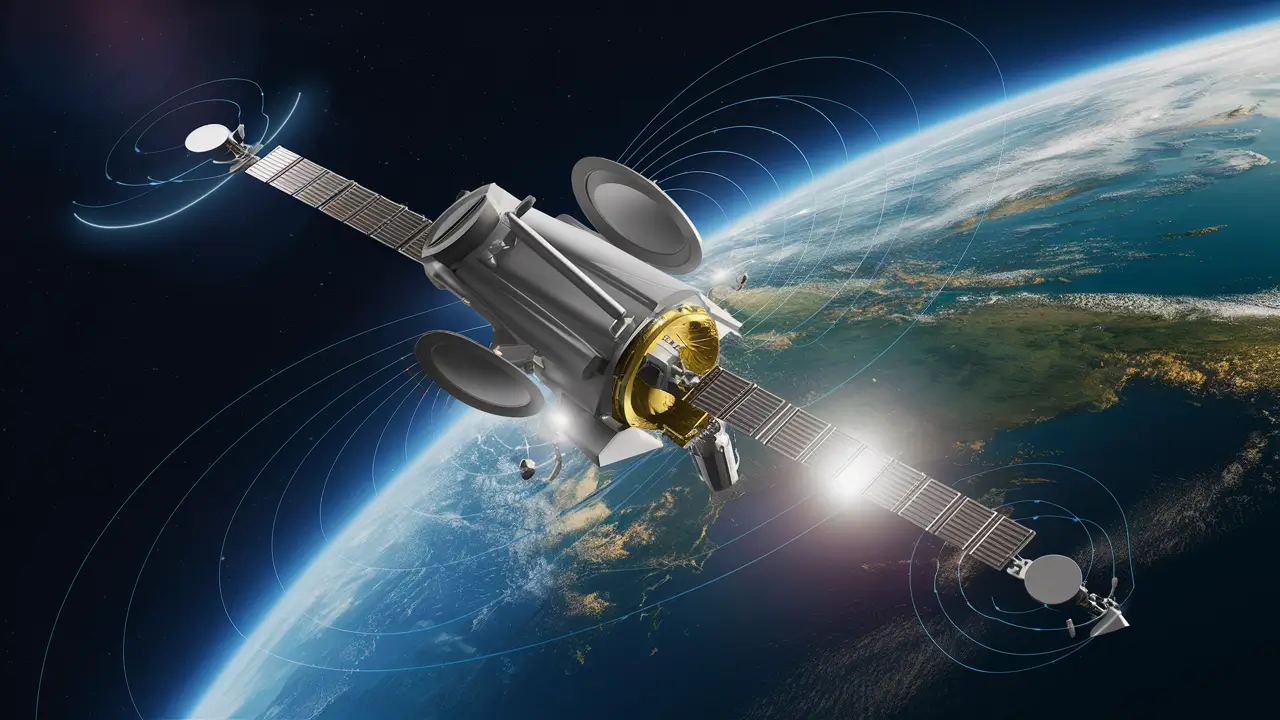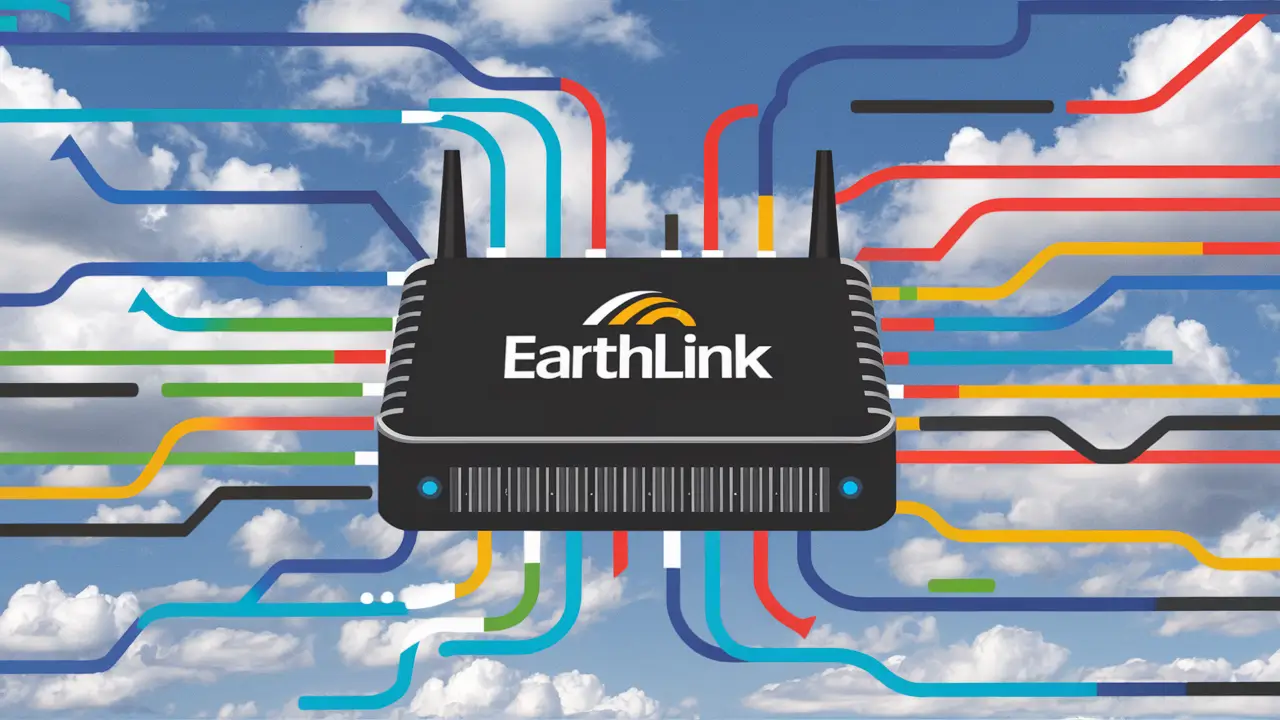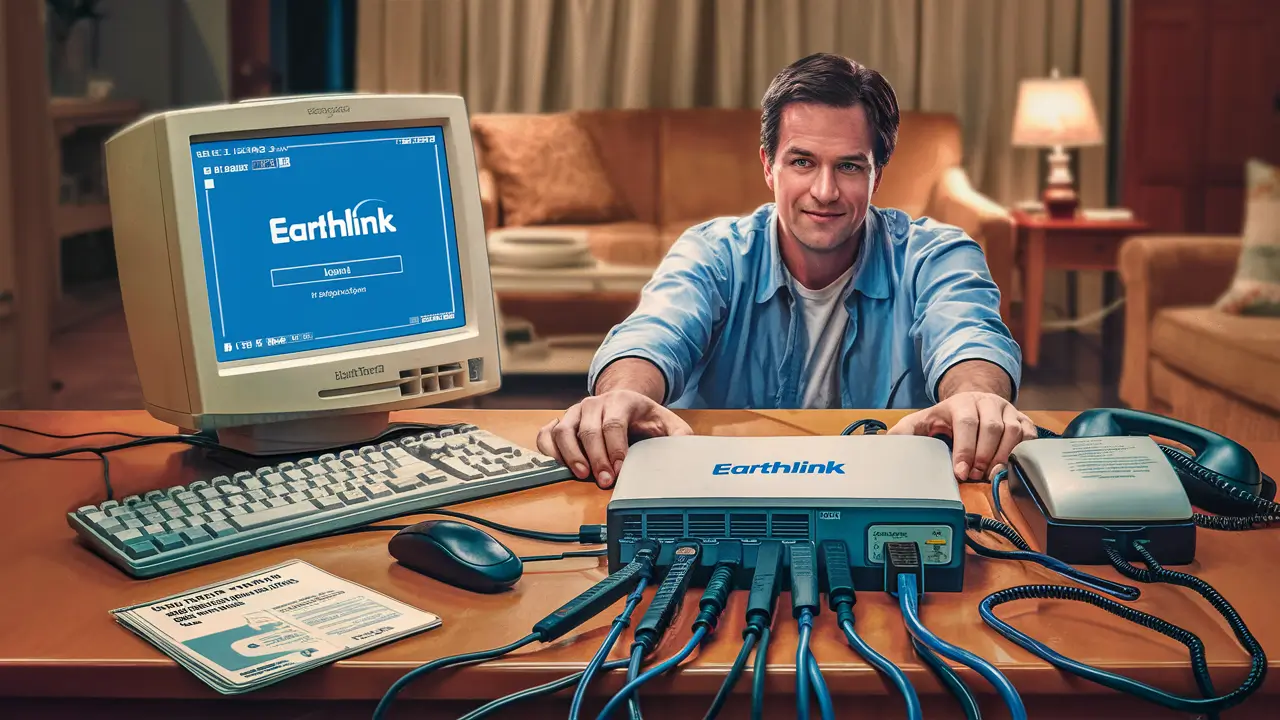Is Earthlink Internet Legit?
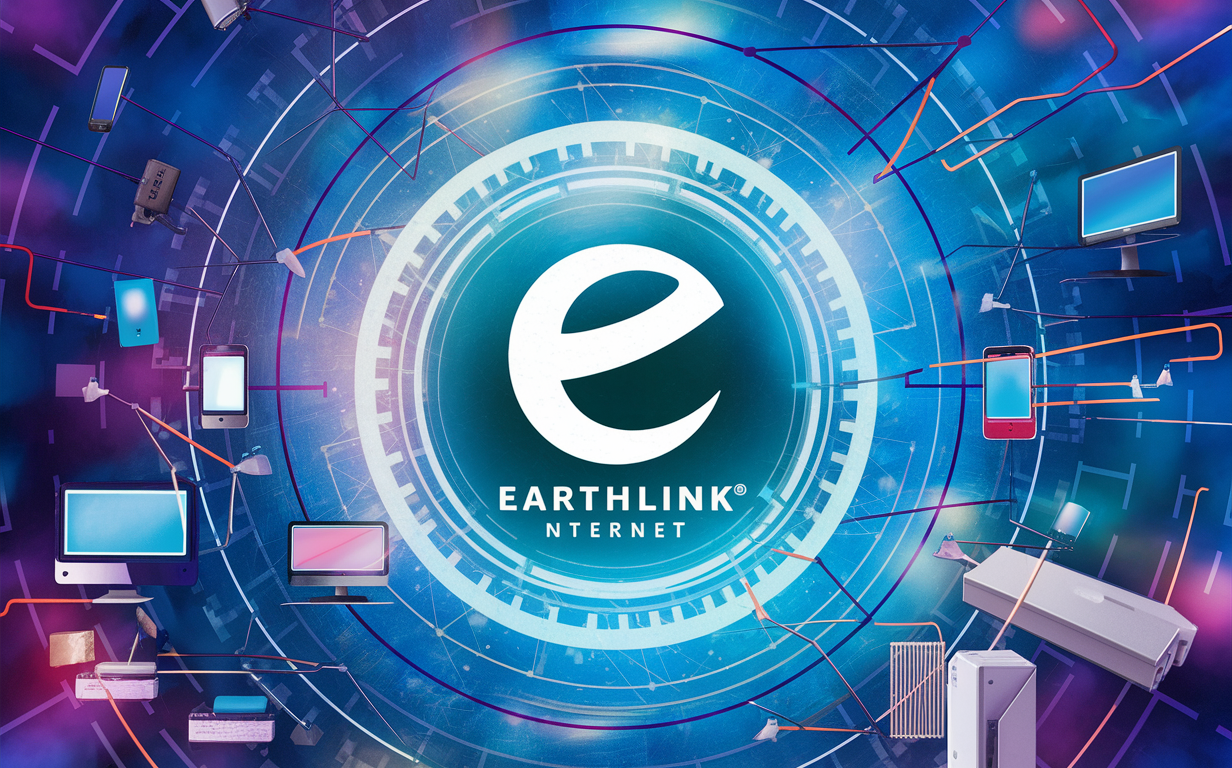
EarthLink Internet is a legitimate and established internet service provider in the United States. Offering a range of connection types including DSL, fiber, and satellite, EarthLink provides internet access to many regions. This article delves into its history, services, customer reviews, pricing, and compares it to competitors, helping you determine if EarthLink is the right choice for your needs in 2025.
Is EarthLink Internet Legit? A Deep Dive for 2025
In the ever-evolving landscape of internet service providers (ISPs), consumers often find themselves bombarded with a plethora of options, each promising unparalleled speed, reliability, and affordability. Amidst this digital cacophony, a persistent question arises for many: "Is EarthLink Internet Legit?" This query stems from a natural desire to ensure that a provider is not only real but also capable of delivering on its promises. For 2025, the answer is a resounding yes. EarthLink is a well-established and legitimate internet service provider with a significant history in the telecommunications industry. However, legitimacy is just the first step in evaluating an ISP. The true measure lies in its service quality, network capabilities, customer satisfaction, and overall value proposition. This comprehensive article aims to dissect EarthLink's offerings, performance, and market standing in 2025, providing you with the detailed insights needed to make an informed decision about whether EarthLink is the right fit for your internet needs.
The internet is no longer a luxury; it's a fundamental utility. From remote work and online education to streaming entertainment and staying connected with loved ones, a reliable internet connection is paramount. Therefore, choosing an ISP requires careful consideration, moving beyond simple legitimacy to explore factors like connection types, speed tiers, data caps, contract terms, customer support, and pricing. EarthLink, with its multi-faceted approach to internet delivery, presents a unique case. It's not a monolithic entity with a single network infrastructure; instead, it often leverages existing networks and partners to deliver its services, a model common among many ISPs. This article will explore these nuances, backed by current data and trends relevant to 2025, to provide a clear, unbiased assessment.
Understanding EarthLink: A Legacy in the Digital Age
EarthLink's journey began in 1994, positioning it as one of the pioneers in the commercial internet service provider space. Founded during the nascent stages of the World Wide Web, EarthLink was instrumental in bringing dial-up internet access to millions of households across the United States. Its early success was built on a commitment to customer service and making the internet accessible to a broader audience. Over the decades, as internet technology rapidly advanced, EarthLink has adapted and evolved. It transitioned from dial-up to broadband technologies like DSL, and more recently, has expanded its offerings to include fiber optic and satellite internet services, reflecting the diverse connectivity needs of modern consumers and businesses.
The company has undergone several ownership changes and strategic shifts throughout its history, which is not uncommon for long-standing tech companies. These changes have often led to a refinement of its service offerings and geographic reach. In the context of 2025, EarthLink operates as a national ISP, but its service availability and the specific technologies it employs can vary significantly by location. This is largely due to its business model, which often involves utilizing the infrastructure of other major providers or partnering with local entities to deliver its services. This approach allows EarthLink to extend its reach into areas where building entirely new infrastructure might be cost-prohibitive, making it a viable option for many consumers who might otherwise have limited choices.
The Evolution of Internet Access
The evolution from dial-up to the high-speed, always-on connections we rely on today is a testament to technological progress. EarthLink's longevity signifies its ability to navigate these technological shifts. In the early days, dial-up connections were slow, tying up phone lines and offering limited bandwidth. EarthLink was a key player in popularizing this form of access. As broadband became the standard, EarthLink embraced DSL (Digital Subscriber Line), which offered significantly faster speeds by utilizing existing telephone lines. This was a crucial step in meeting the growing demand for more robust internet capabilities.
The advent of fiber optic technology marked another leap forward, promising speeds that were orders of magnitude faster than DSL and cable. EarthLink has been investing in and offering fiber-optic services where available, recognizing its potential for high-demand applications like 4K streaming, online gaming, and large file transfers. Furthermore, for areas where wired broadband infrastructure is less developed, EarthLink provides satellite internet solutions. Satellite technology has also seen advancements, offering more competitive speeds and data allowances than in the past, although it typically comes with higher latency.
Business Model and Partnerships
Understanding EarthLink's business model is key to understanding its legitimacy and service delivery. Unlike major telecommunications giants that own vast networks of fiber optic cables and cell towers, EarthLink often acts as a reseller or a managed service provider. This means they may lease bandwidth from other providers, such as AT&T, Verizon, or Lumen Technologies, and then offer these services under the EarthLink brand. This model allows them to offer a wider range of services across a larger geographic area without the immense capital investment required to build and maintain their own infrastructure everywhere.
For consumers, this can mean that the underlying network performance might be similar to that of the provider whose infrastructure is being used. However, EarthLink's value proposition often lies in its customer service, bundled packages, and potentially more flexible contract terms. In 2025, this partnership model is a common and legitimate strategy for many ISPs, enabling them to compete effectively in diverse markets. It's important for consumers to be aware of the underlying technology and infrastructure provider when considering EarthLink, as this can influence factors like actual speeds, reliability, and service availability.
EarthLink's Service Offerings in 2025: More Than Just Internet
In 2025, EarthLink aims to be a comprehensive digital solutions provider, extending its services beyond basic internet connectivity. While internet access remains its core offering, the company has diversified to meet the evolving needs of its customer base. This includes a variety of internet plans tailored to different usage patterns and budgets, as well as additional services designed to enhance the online experience and security.
Internet Connectivity Options
EarthLink's primary strength lies in its ability to offer multiple types of internet connections, catering to different geographical locations and user needs. These include:
- DSL Internet: Leveraging existing telephone lines, DSL is a widely available option, particularly in suburban and rural areas where fiber might not yet be deployed. EarthLink offers various DSL speed tiers, suitable for basic internet use like browsing, email, and standard-definition streaming. In 2025, DSL speeds can range from 1 Mbps to upwards of 100 Mbps, depending on the distance from the local exchange and the quality of the copper lines.
- Fiber Optic Internet: For areas where fiber infrastructure exists, EarthLink provides access to some of the fastest internet speeds available. Fiber optic connections offer symmetrical upload and download speeds, making them ideal for demanding applications such as 4K video streaming, online gaming, large file uploads, and video conferencing. Speeds can reach up to 1 Gbps or even higher in select markets.
- Satellite Internet: In regions where wired broadband is scarce or non-existent, EarthLink offers satellite internet services. This technology involves a satellite dish installed at the customer's home to communicate with a satellite in orbit, which then relays data to and from a ground station. While satellite technology has improved, it generally has higher latency compared to DSL or fiber, which can affect real-time applications. However, for many rural users, it's the only viable option for broadband access.
Bundled Services and Value-Added Features
Beyond internet, EarthLink often provides a suite of services designed to enhance the customer experience and provide added value. These can include:
- Home Phone Service: Many EarthLink internet plans can be bundled with home phone services, often utilizing VoIP (Voice over Internet Protocol) technology. This can offer cost savings compared to traditional landlines and provide features like voicemail and caller ID.
- Web Hosting and Domain Services: Capitalizing on its roots as an internet pioneer, EarthLink continues to offer web hosting solutions for small businesses and individuals. This includes domain registration, website building tools, and various hosting packages.
- Security and Privacy Tools: Recognizing the increasing importance of online safety, EarthLink often includes security features with its plans. These can range from antivirus software and firewall protection to identity theft protection services. In 2025, with heightened concerns about data breaches and online privacy, these features are becoming increasingly attractive.
- Managed Wi-Fi: For customers seeking a seamless and robust in-home Wi-Fi experience, EarthLink may offer managed Wi-Fi solutions. This can include advanced routers and ongoing support to ensure optimal wireless coverage throughout the home.
The availability and specific details of these bundled services can vary based on the customer's location and the type of internet service selected. It's crucial for potential customers to check the exact offerings available in their area.
Decoding EarthLink's Network: DSL, Fiber, and Satellite Explained
EarthLink's approach to delivering internet service is characterized by its utilization of multiple network technologies. This strategy allows them to serve a broad customer base across diverse geographical terrains and infrastructure availability. Understanding these technologies is crucial for setting realistic expectations about speed, reliability, and suitability for different online activities.
DSL (Digital Subscriber Line)
DSL technology uses the existing copper telephone lines to transmit data. It offers a significant upgrade from dial-up, providing a "always-on" connection without tying up the phone line. The speed of DSL is highly dependent on the distance between the customer's premises and the telephone company's central office (CO) or local exchange. The further away a customer is, the weaker the signal and the slower the speeds. In 2025, DSL speeds offered by EarthLink can vary widely, typically ranging from 1 Mbps to 100 Mbps for download speeds, with upload speeds being considerably lower (often 1 Mbps to 10 Mbps). This makes it suitable for basic internet tasks like web browsing, email, social media, and standard-definition streaming. However, it may struggle with high-definition streaming, large file downloads/uploads, and demanding online gaming.
EarthLink's DSL services are often provided through partnerships with major telecommunications companies that own the underlying copper infrastructure. This means that the performance and reliability of EarthLink's DSL can be closely tied to the network management and maintenance of the partner provider. It's important to inquire about the specific partner network in your area when considering EarthLink DSL.
Fiber Optic Internet
Fiber optic internet is considered the gold standard for internet connectivity. It uses thin strands of glass or plastic to transmit data as pulses of light, offering significantly higher bandwidth and faster speeds than DSL or cable. A key advantage of fiber is its symmetrical upload and download speeds, meaning that uploading large files or participating in high-quality video calls is as fast as downloading content. In 2025, EarthLink offers fiber internet in select areas where the necessary fiber optic infrastructure has been laid. These plans can provide speeds ranging from 100 Mbps to 1 Gbps (1000 Mbps) and beyond. Fiber is highly reliable, less susceptible to interference, and offers the best performance for data-intensive activities like 4K streaming, online gaming, virtual reality, and supporting multiple connected devices simultaneously.
The availability of EarthLink's fiber service is geographically limited. It's typically found in more densely populated urban and suburban areas where significant investment in fiber infrastructure has occurred. If fiber is available in your location, it often represents the most robust and future-proof internet option.
Satellite Internet
Satellite internet is a wireless technology that provides internet access via a satellite dish installed at the customer's home. Data travels from the home dish to a satellite in geostationary orbit, then down to a ground station, and finally to the internet. The process is reversed for uploads. This makes satellite internet a viable option for many rural and remote areas where traditional wired infrastructure is not available. In 2025, satellite internet providers, including EarthLink, have made significant strides in improving speeds and data allowances. Speeds can range from 25 Mbps to over 100 Mbps, with data caps that vary by plan. However, a key characteristic of satellite internet is its higher latency (the time it takes for data to travel from source to destination) due to the vast distance the signal must travel to and from the satellite. This higher latency can impact real-time applications like online gaming, video conferencing, and VoIP calls, making them less responsive.
EarthLink's satellite offerings are often provided through partnerships with satellite operators. It's important for potential customers to understand the data allowances, potential for throttling after exceeding data limits, and the inherent latency limitations before choosing satellite internet. Despite its drawbacks, for many in underserved areas, it's the only way to access broadband speeds.
Navigating EarthLink's Pricing and Plans for 2025
Understanding the pricing structure and available plans is a critical step in determining if EarthLink is a suitable provider. In 2025, EarthLink offers a variety of plans across its different technologies, each with its own pricing tiers, potential fees, and contract requirements. It's important to note that pricing can vary significantly based on your geographic location, the specific technology available, and ongoing promotions.
Typical Pricing Structures
EarthLink's pricing generally follows a common ISP model:
- Monthly Service Fees: These are the base costs for the internet plan, usually determined by the speed and type of connection. Plans can range from approximately $50 per month for basic DSL to $100 or more for high-speed fiber optic plans.
- Equipment Rental Fees: EarthLink may charge a monthly fee for modem or router rental. These costs can add up over time, and customers may have the option to purchase their own compatible equipment to avoid these fees.
- Installation Fees: A one-time installation fee is often charged, especially for new service setups. The amount can vary depending on the complexity of the installation and the technology being deployed.
- Contract Terms: EarthLink may offer plans with or without contracts. Contracted plans often come with lower monthly rates but penalize early termination. Month-to-month plans typically offer more flexibility but may have slightly higher monthly costs.
Factors Influencing Plan Costs
Several factors will influence the final cost of an EarthLink plan:
- Speed Tier: Higher internet speeds naturally come with higher monthly costs. A 50 Mbps DSL plan will be less expensive than a 1 Gbps fiber optic plan.
- Technology Type: Generally, fiber optic plans are the most expensive due to the advanced infrastructure required. DSL tends to be more budget-friendly, and satellite pricing can vary, often with promotional rates for new customers.
- Promotional Offers: EarthLink, like many ISPs, frequently offers introductory pricing or discounts for new customers. These promotions are usually for a limited time (e.g., 12 or 24 months) after which the price reverts to the standard rate.
- Bundling: Bundling internet with other services like home phone may sometimes result in a slight discount on the overall package.
- Data Caps: While many EarthLink plans, particularly DSL and fiber, offer unlimited data, satellite plans often come with data caps. Exceeding these caps can lead to reduced speeds or additional charges.
Example Plan Comparison (Illustrative for 2025)
To provide a clearer picture, here's an illustrative comparison of potential EarthLink plans in 2025. Note: Actual pricing and availability must be verified on EarthLink's official website for your specific address.
| Feature | EarthLink DSL Basic | EarthLink Fiber 500 Mbps | EarthLink Satellite Standard |
|---|---|---|---|
| Speed (Download/Upload) | Up to 50 Mbps / Up to 5 Mbps | Up to 500 Mbps / Up to 500 Mbps | Up to 100 Mbps / Up to 10 Mbps |
| Estimated Monthly Cost | $55 - $75 | $85 - $105 | $70 - $90 (plus potential equipment lease) |
| Data Cap | Unlimited | Unlimited | 200 GB (soft cap, speeds may reduce) |
| Contract Term | Typically 12 months | Typically 12 months | Typically 24 months |
| Best For | Basic browsing, email, light streaming | Heavy streaming, gaming, multiple users, smart homes | Rural areas with no other broadband options |
When evaluating pricing, always look beyond the advertised monthly rate. Ask about installation fees, equipment rental costs, any hidden surcharges, and the terms of any promotional pricing. Understanding the total cost of ownership over the contract period is essential.
Customer Experiences: What Users Are Saying About EarthLink in 2025
Customer reviews and satisfaction ratings are invaluable indicators of an ISP's performance and service quality. For EarthLink in 2025, feedback is varied, reflecting the diverse nature of its service offerings and the underlying infrastructure it utilizes. While some customers report positive experiences, others encounter challenges. Analyzing these reviews provides a balanced perspective on what to expect.
Common Praises
Many customers commend EarthLink for its accessibility, particularly in areas where other providers may not offer competitive options. Key areas of praise often include:
- Customer Service: EarthLink has historically emphasized customer service, and many users report positive interactions with support staff. This is often cited as a significant advantage, especially when dealing with technical issues or billing inquiries. The ability to speak with a representative who is knowledgeable and helpful can make a substantial difference in the customer experience.
- Availability in Rural Areas: For individuals living in rural or underserved regions, EarthLink's DSL and satellite options can be a lifeline, providing internet access where it was previously unavailable or prohibitively expensive. This broad reach is a significant factor in its legitimacy and continued relevance.
- Transparent Billing (for some): While billing issues can arise with any provider, some customers appreciate EarthLink's straightforward billing practices, especially when compared to providers known for complex fee structures.
- Reliable Basic Service: For users with modest internet needs (browsing, email, basic streaming), EarthLink's DSL and satellite services are often reported as stable and reliable enough to meet these demands consistently.
Areas for Improvement and Common Complaints
Despite the positive feedback, several recurring complaints highlight areas where EarthLink could improve:
- Speed Limitations: Especially with DSL and satellite services, customers often express dissatisfaction with the available speeds, particularly when trying to perform data-intensive tasks or when multiple users are connected simultaneously. The advertised speeds may not always be achieved in real-world conditions.
- Customer Service Wait Times: While many praise the quality of EarthLink's customer service, others report long wait times to connect with a representative, especially during peak hours.
- Contractual Issues and Price Increases: Some customers have reported unexpected price increases after promotional periods expire, or difficulties navigating contract terms and early termination fees. It's crucial to read the fine print.
- Inconsistent Performance: For satellite internet users, inconsistent performance, weather-related outages, and latency issues are common complaints. DSL performance can also be affected by line quality and distance from the exchange.
- Technical Support Effectiveness: While some find support excellent, others report that technical support agents are unable to resolve complex issues, leading to frustration and prolonged service disruptions.
It is important to note that customer reviews can be subjective and often reflect individual experiences. However, consistent themes across numerous reviews provide valuable insights into potential strengths and weaknesses. For 2025, EarthLink's reputation for customer service remains a strong point, but managing expectations regarding speed and performance, particularly for DSL and satellite, is crucial.
EarthLink vs. The Competition: A 2025 Comparison
In the competitive landscape of internet service providers in 2025, EarthLink faces competition from a wide array of companies, ranging from national giants to regional providers. To determine EarthLink's standing, it's useful to compare it against key competitors across different service categories.
EarthLink vs. Major National Providers (e.g., Comcast/Xfinity, Spectrum, Verizon Fios, AT&T)
Fiber/High-Speed Cable: In areas where EarthLink offers fiber, it competes directly with providers like Verizon Fios, AT&T Fiber, and Xfinity (Comcast). These providers often have extensive fiber networks, offering very high speeds (1 Gbps+) and competitive pricing. EarthLink's fiber offerings, while legitimate and fast, may not always match the sheer scale or peak speeds of these larger players in every market. However, EarthLink might differentiate itself with customer service or bundled offerings.
DSL: EarthLink's DSL services compete with AT&T DSL and other regional providers utilizing similar infrastructure. While DSL is becoming less prevalent as fiber and cable expand, it remains a crucial option in many areas. EarthLink's advantage here might be its customer service focus and potentially more flexible plans compared to the major carriers' legacy DSL offerings.
Satellite: EarthLink's satellite internet competes with providers like HughesNet and Viasat. These companies are the primary players in the satellite internet market. EarthLink's satellite offering, often provided through partnerships, aims to offer a competitive package in terms of speed and data, but the fundamental limitations of satellite technology (latency, weather sensitivity) remain consistent across providers.
EarthLink vs. Smaller Regional ISPs
In many markets, EarthLink competes with smaller, local ISPs that may offer niche services or hav
